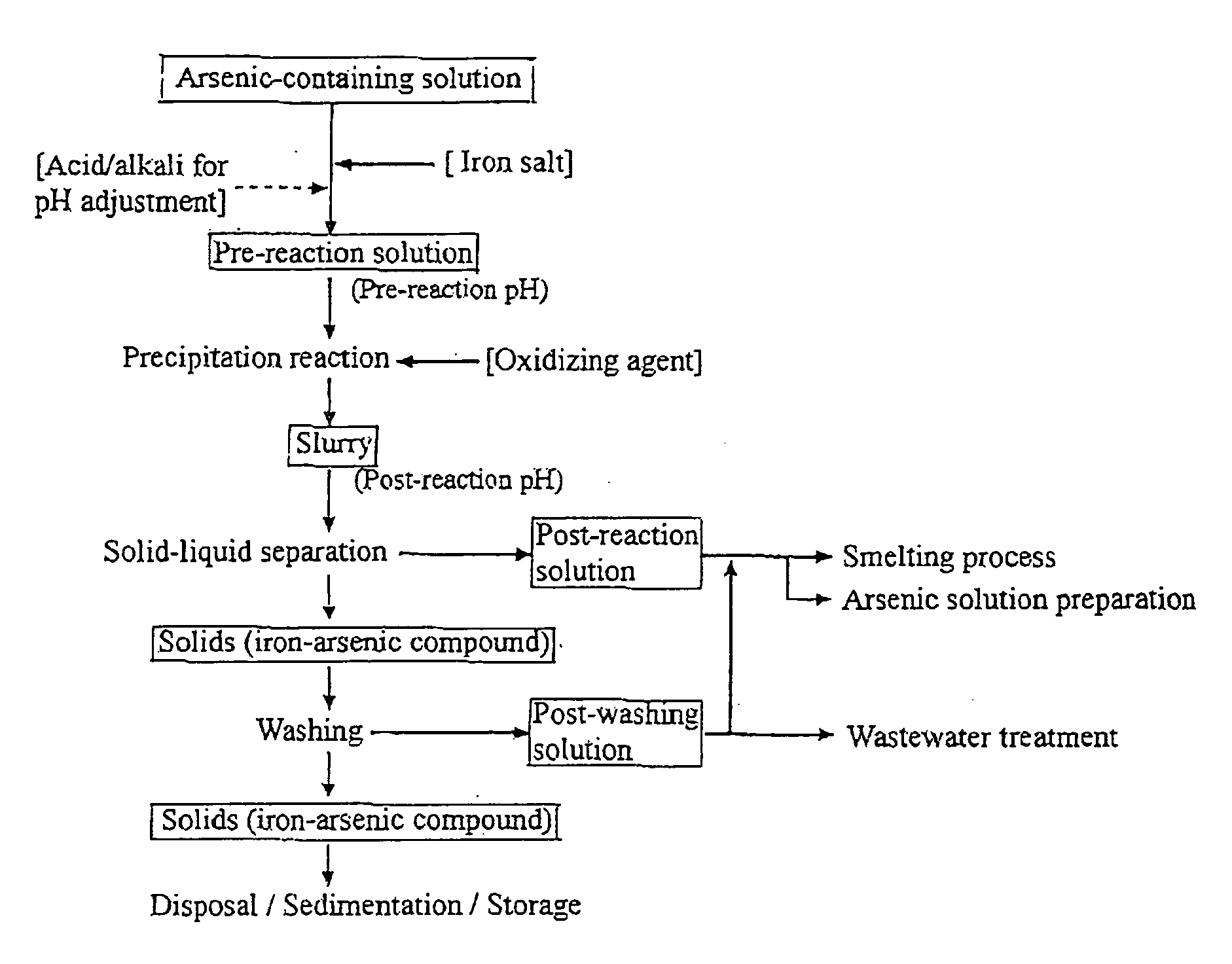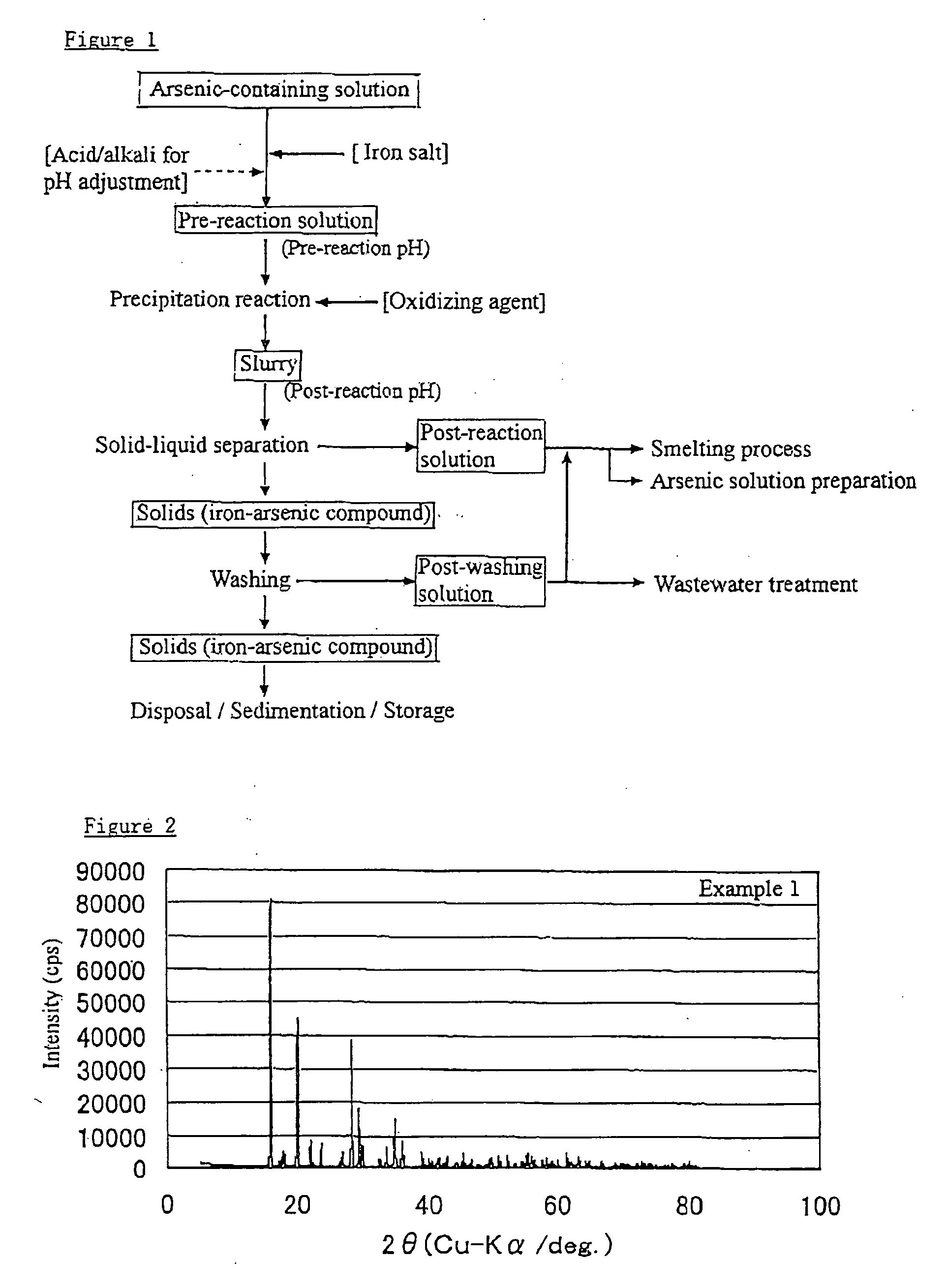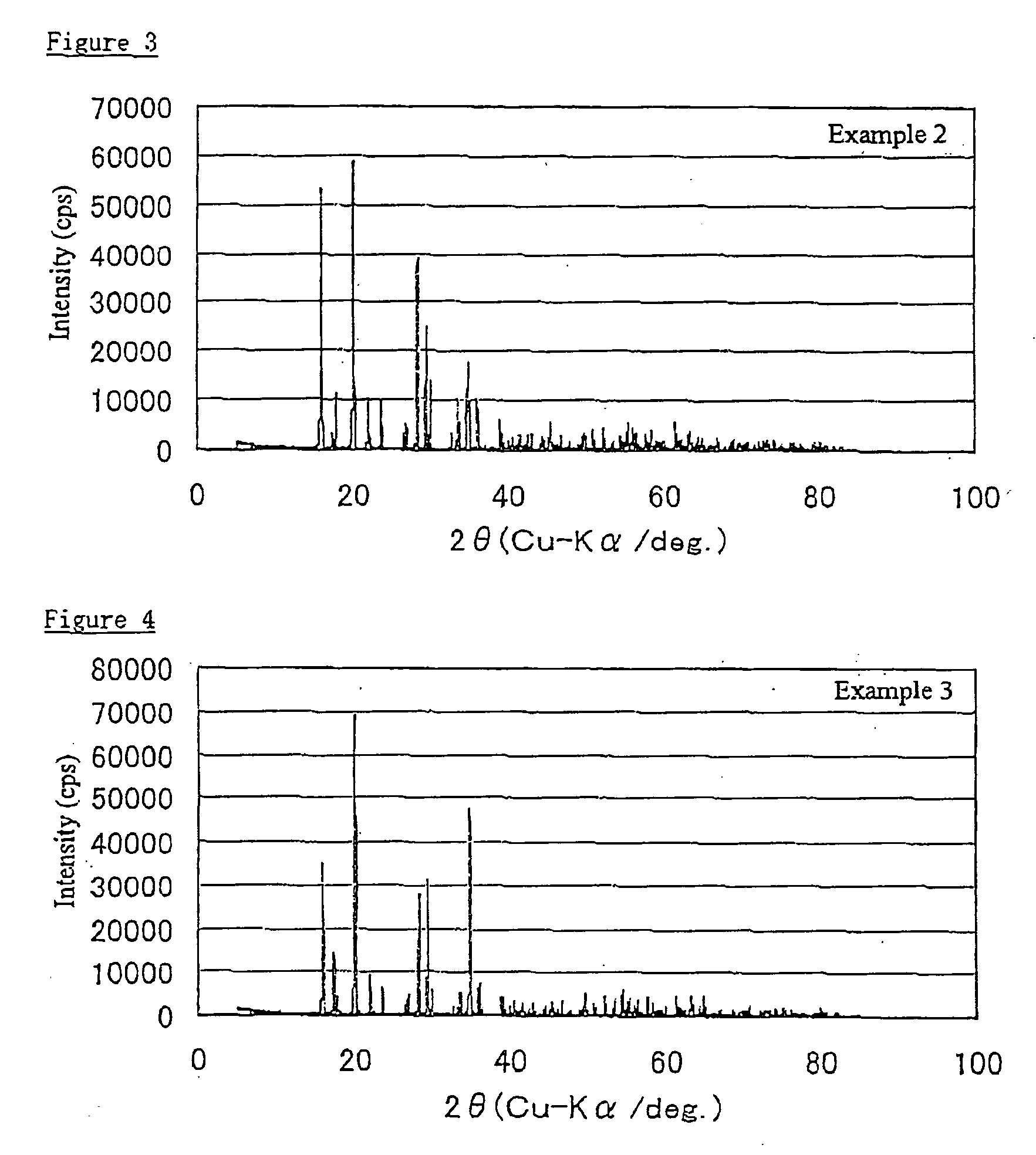Method of producing iron-arsenic compound excellent in crystallinity
- Summary
- Abstract
- Description
- Claims
- Application Information
AI Technical Summary
Benefits of technology
Problems solved by technology
Method used
Image
Examples
example 1
[0042]The arsenic starting material was prepared by diluting with pure water an arsenic solution (As =500 g / L (pentavalent)) of a commercially available reagent (Wako Pure Chemical Industries). The iron salt used was ferrous sulfate 7-hydrate reagent (FeSO4.7H2O, Wako Pure Chemical Industries). Na2SO4 reagent (Wako Pure Chemical Industries) was used to simulate an impurity.
[0043]The materials were mixed with pure water to prepare 0.7 L of an arsenic-iron containing solution having an arsenic concentration of 50 g / L, iron concentration of 55.91 g / L, and a sodium concentration of 40 g / L. The solution was transferred to a 2 L glass beaker, to which two stirring turbine blade and four baffle plates were set, and vigorously stirred the solution at 1,000 rpm under heating to 95° C. A very small sample of the solution taken at this point was cooled to 60° C. and measured for pH and ORP (oxidation-reduction potential). pH was measured with a glass electrode and ORP with an Ag / AgCl electrode...
example 2
[0056]The procedure of Example 1 was repeated except that the arsenic concentration of the pre-reaction solution was reduced to 30 g / L and the iron concentration thereof was reduced to 33.55 g / L. The amount of added Na2SO4 reagent was the same as in Example 1, to give a sodium concentration of 40 g / L. pH and ORP were measured at the point where the temperature reached 95° C. The reaction conditions were the same as in Example 1 except that the pre-reaction pH was slightly higher at 1.56.
[0057]The results are shown in Tables 1-4.
[0058]Under conditions of an arsenic concentration of 30 g / L, a sodium (impurity) concentration of 40 g / L and a reaction temperature of 95° C., ample precipitation of arsenic was achieved to obtain a substance whose solids component had a very low moisture content of under 10% and that had an arsenic grade exceeding 30%. Thus, arsenic was precipitated in a very compact form. The substance was composed of coarse particles, as evidenced by its average particle ...
example 3
[0059]The procedure of Example 1 was repeated except that the arsenic concentration of the pre-reaction solution was reduced to 20 g / L and the iron concentration thereof was reduced to 22.36 g / L. The amount of added Na2SO4 reagent was the same as in Example 1, to give a sodium concentration of 40 g / L. pH and ORP were measured at the point where the temperature reached 95° C. The reaction conditions were the same as in Example 1 except that the pre-reaction pH was slightly higher at 1.72.
[0060]The results are shown in Tables 1-4.
[0061]Under conditions of an arsenic concentration of 20 g / L, a sodium (impurity) concentration of 40 g / L and a reaction temperature of 95° C., ample precipitation of arsenic was achieved to obtain a substance whose solids component had a very low moisture content of under 10% and that had an arsenic grade exceeding 30%. Thus, arsenic was precipitated in a very compact form. The substance was composed of coarse particles, as evidenced by its average particle ...
PUM
| Property | Measurement | Unit |
|---|---|---|
| Concentration | aaaaa | aaaaa |
| Concentration | aaaaa | aaaaa |
| Concentration | aaaaa | aaaaa |
Abstract
Description
Claims
Application Information
 Login to View More
Login to View More - R&D
- Intellectual Property
- Life Sciences
- Materials
- Tech Scout
- Unparalleled Data Quality
- Higher Quality Content
- 60% Fewer Hallucinations
Browse by: Latest US Patents, China's latest patents, Technical Efficacy Thesaurus, Application Domain, Technology Topic, Popular Technical Reports.
© 2025 PatSnap. All rights reserved.Legal|Privacy policy|Modern Slavery Act Transparency Statement|Sitemap|About US| Contact US: help@patsnap.com



